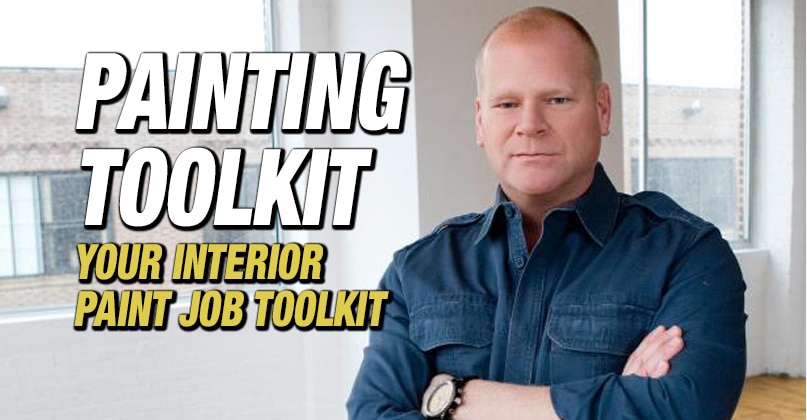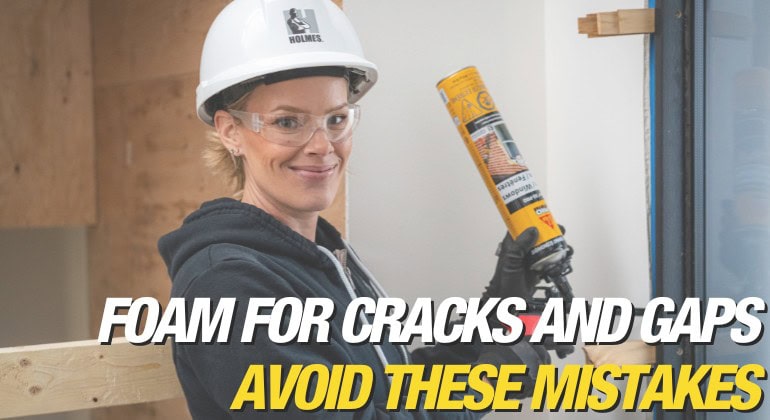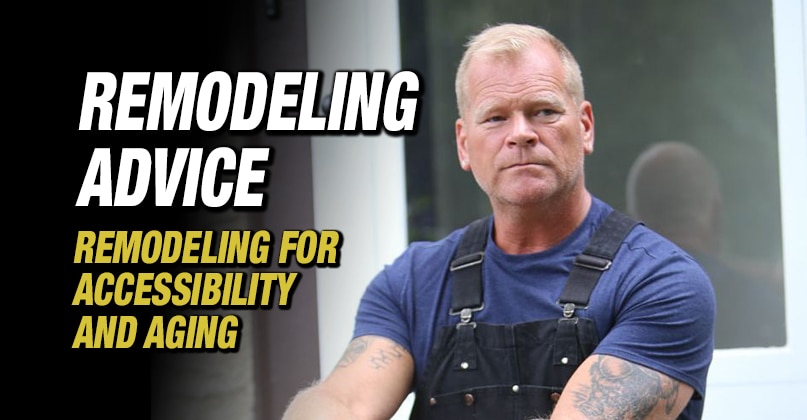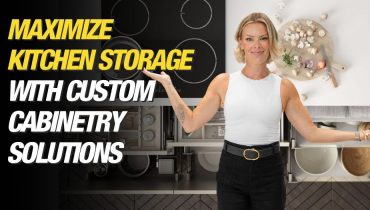I love my kitchen but it’s not large so it gets messy fast – add two growing young daughters, a husband and a cat – you have to stay organized....
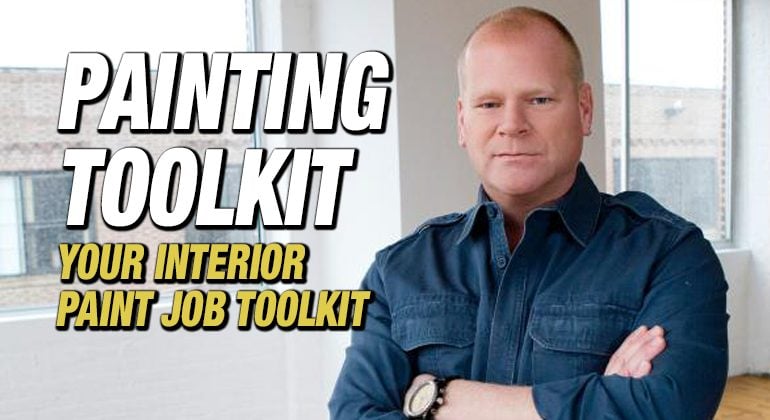
Your Interior Paint Job ToolKit
By Mike Holmes
Mike’s Advice / Home Renovation
Friday, April 3rd, 2020 @ 11:41am
Most DIY kits will have a few standard tools. You’ll likely have a hammer, a measuring tape, and a few screwdrivers. That can get you through a lot of small jobs – but if you’re tackling an interior paint job, you’ll need to add a few more things to your toolbox.
RELATED
Painting is a good DIY job for any beginner to tackle because you don’t have to worry about messing up the structure of the house – just the look. If you’re tackling a painting job, here are the materials needed to paint a room.
What tools should I use to paint my room?
Here’s what you need in your toolkit before you begin to paint:
- Painters tape for trim, ceiling, and detail work
- Dropcloth to reduce cleanup
- Paint roller and replacement rollers
- Paintbrush for smaller detail work
- Paint tray
- Ladder – do NOT attempt to use furniture as a step stool
- Paint
- Primer
- Sandpaper
- Filling compound to repair any holes or dents
- Putty knife
- Rags
Should I use a product that combines paint and primer?
Personally, I’m not a fan. Why? The job of a primer is to help the paint adhere to the surface you’re painting – and not all primers perform the same function. Some are meant to suppress stains, while others are meant to make your chosen paint colour look more saturated.
Using the proper tinted primer can actually help cut down on the number of coats you need to give a room.
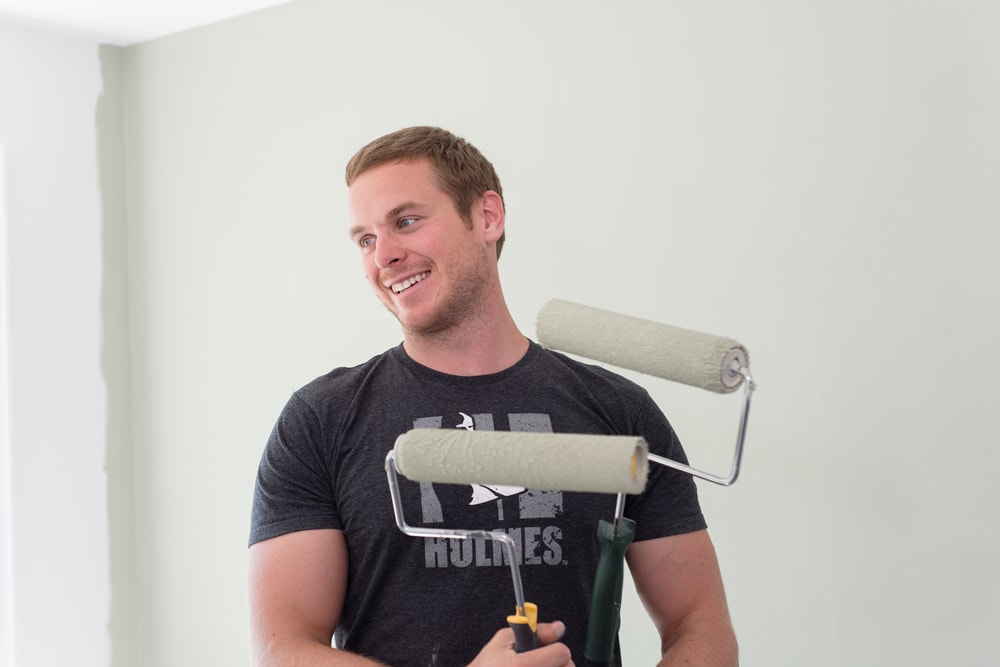
It can save a lot of work. A lot more work than using a paint and primer combination would.
What kind of paints are best for interior painting?
There’s more to selecting your paint than simply picking a colour. The type of paint can actually vary from room to room.
Do you need something durable that will stand up to mess? Or maybe you need something to complement a room that gets a lot of extra light. Here’s a basic guide to the types of paints you’ll come across and where they’re best applied.
Matte paints have a low reflective finish and dry quickly. They’re good for covering up imperfections, but they aren’t very durable. Also known as flat paint. It’s good for the bedrooms, the living room, or the ceiling.
Satin paints reflect more light than matte paint and is shinier as a finish, and easier to clean. Also known as an eggshell. It works well for higher traffic areas – hallways, kitchens, and bathrooms.
Semi-gloss is a high sheen paint that’s good for rooms that get a lot of moisture like kitchens, bathrooms, and playrooms. Why? It’s durable and can be scrubbed – so any grease splatter or other grime can be wiped clean. It’s also a great choice for doors and cabinets.
How to paint semi-gloss over semi-gloss?
When it comes time to repaint a room with a semi-gloss stain, odds are pretty good that you’ll choose another semi-gloss stain. So what’s the best way to cover a semi-gloss paint with another semi-gloss?
It’s similar to adding any other paint. You’ll want to sand the surface, if possible, then prime the walls. Add your paint, one coat at a time, and add more coats as necessary.
There are some cases where you COULD skip the priming step – but if you’re looking to replace and old semi-gloss with new, you have to ensure space is properly primed.
Do I want an oil paint or latex paint?
Oil-based paints are strong and durable – but they take longer to dry than latex paints. Since they’re more durable, painting your trims with oil paint is a good idea because they tend to take a much bigger beating than the rest of the wall.
Oil-based paints are made with either synthetic or natural oils, though synthetic tends to be the norm as it’s less expensive and stronger overall.
You’ll have an easier time working with latex-based paints, and they dry faster than their oil-based counterpart, but it’s not quite as strong. It makes a good choice for those areas that won’t see as much wear and tear, like a ceiling.
Like I said before, not all primers are the same. Make sure you get a corresponding primer for the type of paint you’ve chosen.
As with most things in the home, there’s not a one-size-fits-all solution when it comes to the kind of paint you choose. You’ll find reasons to use both oil and latex paint throughout your home.
Just because painting is a job that’s relatively easy for a beginner DIYer to tackle, doesn’t mean you can go into the job unequipped and uniformed. Avoid painting yourself into a corner by making sure you’ve got the right tools, and right knowhow. That’s how you paint it right.
READ NEXT
